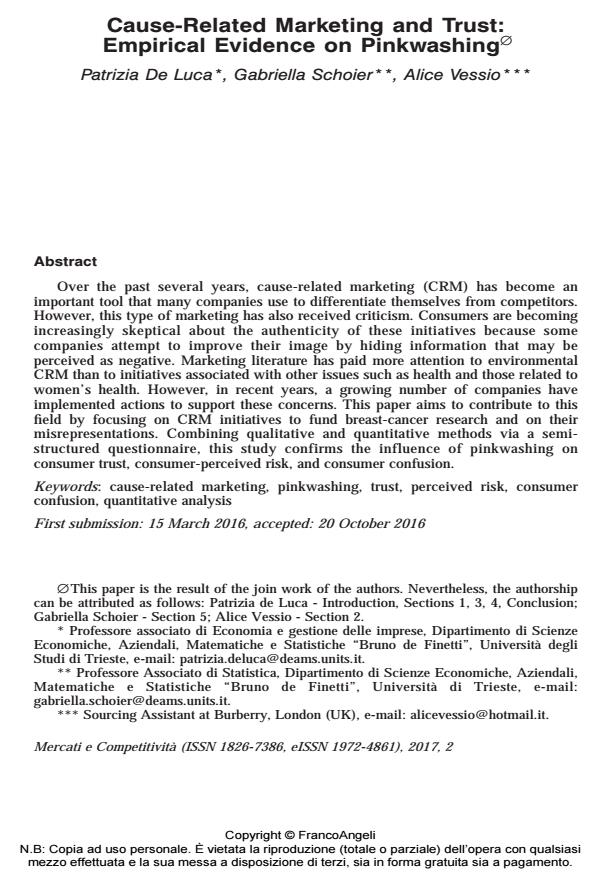Cause-Related Marketing and Trust: Empirical Evidence on Pinkwashing
Titolo Rivista MERCATI & COMPETITIVITÀ
Autori/Curatori Patrizia de Luca, Gabriella Schoier, Alice Vessio
Anno di pubblicazione 2017 Fascicolo 2017/2
Lingua Inglese Numero pagine 23 P. 51-73 Dimensione file 485 KB
DOI 10.3280/MC2017-002004
Il DOI è il codice a barre della proprietà intellettuale: per saperne di più
clicca qui
Qui sotto puoi vedere in anteprima la prima pagina di questo articolo.
Se questo articolo ti interessa, lo puoi acquistare (e scaricare in formato pdf) seguendo le facili indicazioni per acquistare il download credit. Acquista Download Credits per scaricare questo Articolo in formato PDF

FrancoAngeli è membro della Publishers International Linking Association, Inc (PILA)associazione indipendente e non profit per facilitare (attraverso i servizi tecnologici implementati da CrossRef.org) l’accesso degli studiosi ai contenuti digitali nelle pubblicazioni professionali e scientifiche
Over the past several years, cause-related marketing (CRM) has become an important tool that many companies use to differentiate themselves from competitors. However, this type of marketing has also received criticism. Consumers are becoming increasingly skeptical about the authenticity of these initiatives because some companies attempt to improve their image by hiding information that may be perceived as negative. Marketing literature has paid more attention to environmental CRM than to initiatives associated with other issues such as health and those related to women’s health. However, in recent years, a growing number of companies have implemented actions to support these concerns. This paper aims to contribute to this field by focusing on CRM initiatives to fund breast-cancer research and on their misrepresentations. Combining qualitative and quantitative methods via a semistructured questionnaire, this study confirms the influence of pinkwashing on consumer trust, consumer-perceived risk, and consumer confusion.
Parole chiave:Cause-related marketing, pinkwashing, trust, perceived risk, consumer confusion, quantitative analysis
- Holding Up a Democratic Facade: How ‘New Work Organizations’ Avoid Resistance and Litigation When Dismissing Their Managers Johanna L. Degen, Massih Zekavat, in Frontiers in Psychology 789404/2022
DOI: 10.3389/fpsyg.2022.789404
Patrizia de Luca, Gabriella Schoier, Alice Vessio, Cause-Related Marketing and Trust: Empirical Evidence on Pinkwashing in "MERCATI & COMPETITIVITÀ" 2/2017, pp 51-73, DOI: 10.3280/MC2017-002004